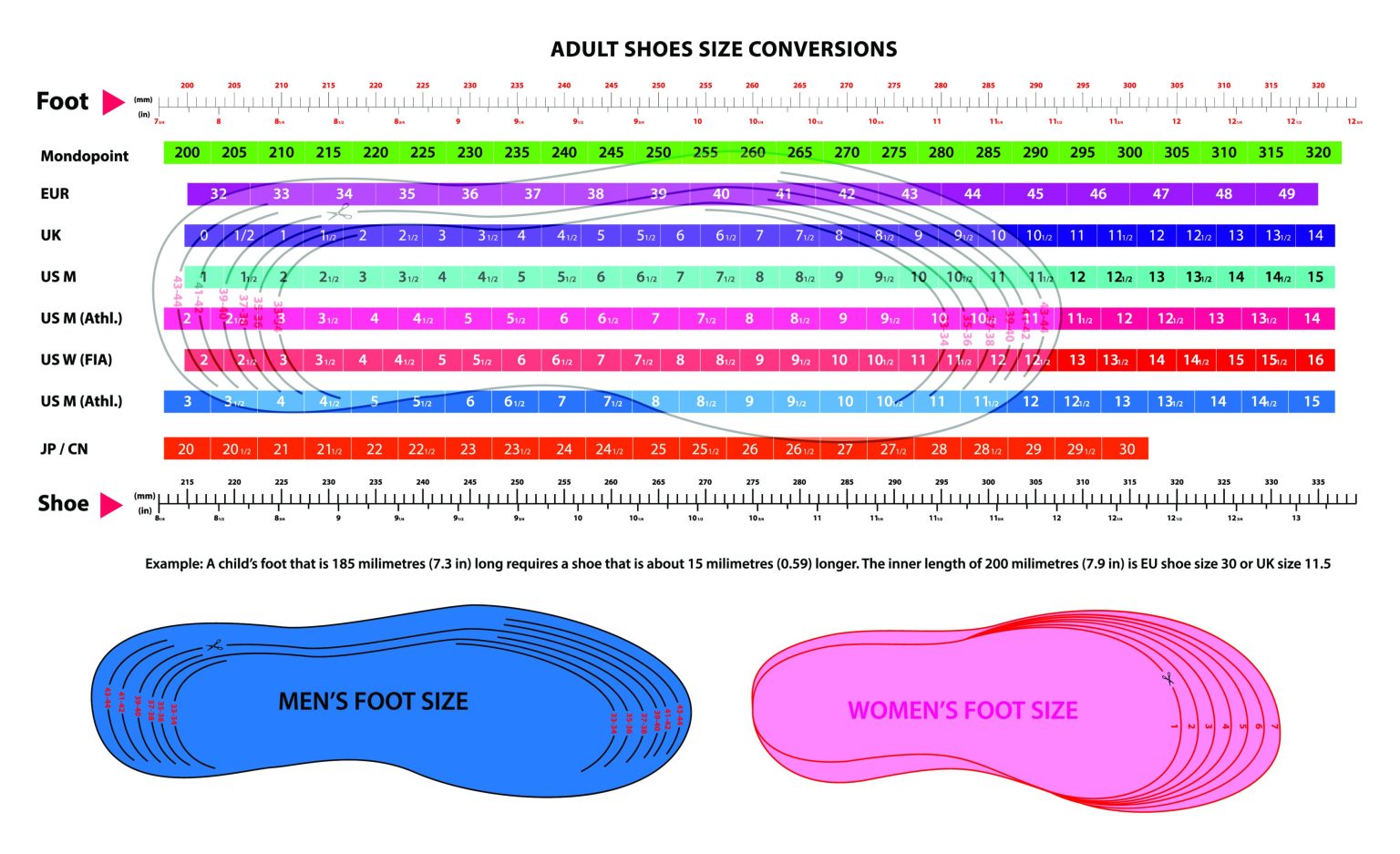Womens to Mens Shoe Size Converter

Converting women’s shoe sizes to men’s shoe sizes can be a bit tricky, but understanding the basic principles behind shoe sizing can help. Shoe sizes are based on the length and width of the foot, and different countries have their own sizing standards. The most common systems are the US, UK, and European sizes. However, for the purpose of converting women’s to men’s shoe sizes, we’ll focus primarily on the US sizing system, as it’s one of the most widely used and offers a straightforward conversion method.
Understanding US Shoe Sizing
In the US, shoe sizes are based on the length of the foot, measured in barleycorns (one barleycorn equals 1⁄3 inch). Men’s sizes and women’s sizes have different starting points and intervals between sizes.
- Men’s sizes start at 1 and increase in intervals of 1⁄3 inch (or one barleycorn).
- Women’s sizes start at 4 and also increase in intervals of 1⁄3 inch.
However, women’s shoes are generally narrower than men’s, and the conversion isn’t just a matter of matching numbers due to differences in shoe width and design.
Conversion Basics
A common rule of thumb for converting women’s shoe sizes to men’s sizes in the US system is to subtract 1.5 to 2 sizes from the woman’s size to get the equivalent men’s size. This method, however, can be somewhat inaccurate due to variations between brands and personal foot shapes.
Detailed Conversion Chart
Given the complexities, a more accurate approach is to use a detailed conversion chart. Keep in mind that these conversions are approximate, as different brands may have slightly different fittings.
| Women’s US Size | Men’s US Size |
|---|---|
| 4 | 2.5 to 3 |
| 4.5 | 3 to 3.5 |
| 5 | 3.5 to 4 |
| 5.5 | 4 to 4.5 |
| 6 | 4.5 to 5 |
| 6.5 | 5 to 5.5 |
| 7 | 5.5 to 6 |
| 7.5 | 6 to 6.5 |
| 8 | 6.5 to 7 |
| 8.5 | 7 to 7.5 |
| 9 | 7.5 to 8 |
| 9.5 | 8 to 8.5 |
| 10 | 8.5 to 9 |
| 10.5 | 9 to 9.5 |
| 11 | 9.5 to 10 |

Important Considerations
- Width: Men’s shoes tend to be wider than women’s. If you have narrower feet, you might find a better fit in women’s shoes, and vice versa for wider feet.
- Brand Variations: Different brands have slightly different sizings, so what might be a perfect fit in one brand could be too small or too large in another.
- Activity: The type of activity you plan to do in the shoes can also affect the fit. For example, running shoes may require a slightly roomier fit than casual or dress shoes.
Conclusion
Converting women’s shoe sizes to men’s sizes requires understanding the differences in sizing standards and considering individual factors such as foot width and brand variations. While general guidelines and charts can provide a starting point, the best way to ensure a good fit is to try on shoes from different brands and styles. Whether shopping online or in-store, taking the time to find the perfect fit can make a significant difference in comfort and performance.
Why do women's and men's shoe sizes differ?
+Women's and men's shoe sizes differ primarily due to historical and anatomical reasons. Historically, shoe sizes were based on the last (the model) used to make the shoe, with men's sizes starting at 1 and women's at 4, reflecting different starting points and intervals between sizes. Anatomically, men's feet tend to be wider and longer than women's, necessitating different sizes and fits.
How accurate are shoe size conversion charts?
+Shoe size conversion charts are approximate and can vary significantly between brands and individual foot shapes. While they provide a good starting point, the best way to ensure accuracy is to try on shoes or consult with a professional fitter, especially if you're buying from a new brand or style.
What factors should I consider when converting shoe sizes?
+Besides the numerical size, consider the width of your foot, the specific brand's sizing (as brands can vary), and the intended use of the shoes. For example, running shoes may require a slightly different fit than dress shoes. Also, consider the material of the shoe, as some materials may stretch more than others.
Given the complex nature of shoe sizing, finding the perfect fit often requires a combination of using conversion charts, trying on different sizes, and understanding the nuances of shoe design and foot anatomy. Whether you’re shopping for yourself or someone else, taking the time to get the right size can make all the difference in comfort and satisfaction.

